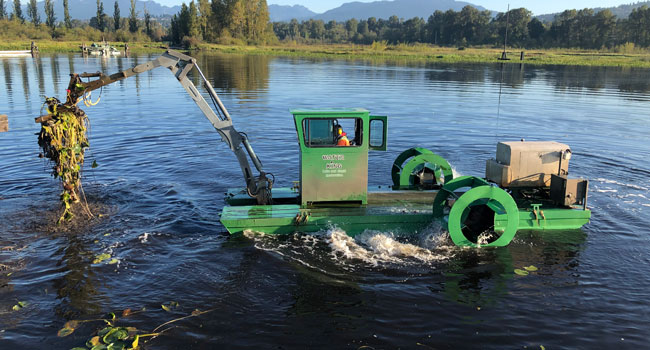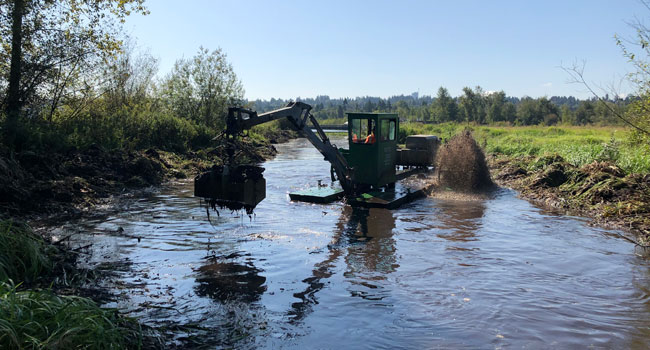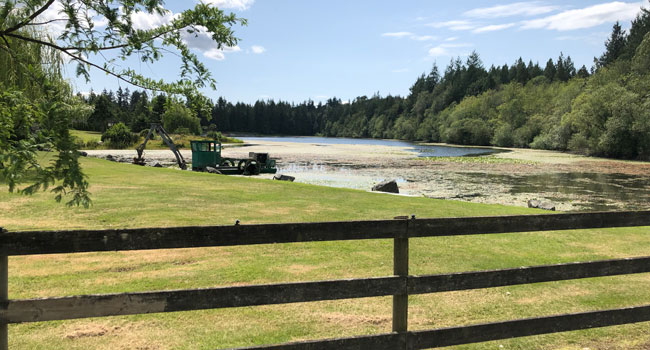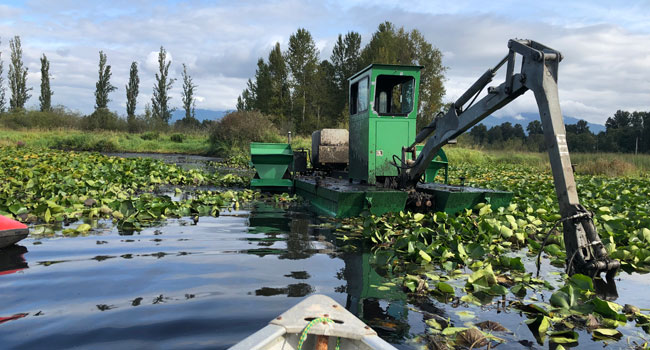Lake & Canal Restoration Services
Aquatic Weed / Algae Control

Mechanical aquatic weed harvesting to remove invasive and nuisance plants can be as selective as necessary to achieve the desired results. An alternative to chemical herbicide methods, aquatic weed harvesting can improve a lake ecosystem by removing massive amounts of vegetation which improves oxygen levels and creates a better breading ground for fish and wildlife.
Sediment / Debris Removal

Use of our machine provides an environmentally friendly method of removing organic muck and debris from the bottom of lakes and ponds. It can remove accumulations of soft sediment and debris such as decaying leaves and peat. Routine maintenance removal of organic debris from the bottom of a pond or lake will help to prevent the need for future dredging.
Water Quality Control

Water quality problems cam be a detriment to aquatic ecosystems. Urban development, land clearing, pollution, and agriculture can introduce excess nutrients to our aquatic resources. Removal of excess vegetation will help to reduce the overall nutrient load, minimizing common water quality issues like low dissolved oxygen, foul odors and nuisance algae blooms.
Hydro-Raking & Dredging

Hydro-raking or mechanical raking is an environmentally friendly, non-chemical, effective technique for selective removal of nuisance plants and root systems. The hydro-rake works in water as shallow as 1 foot and can restore depths from 18 inches to 10 feet. It can work selectively to clear beaches and dock areas or boating and fishing lanes. This service can provide from 1-3 years of nuisance plant control.
When sediment builds up to the point that it can no longer retain water, a dredging solution may be necessary to restore and reset the lifespan of the lake or canal. Dredging can increase volume and depths to 15 feet or more. It removes nutrient-heavy sediments and eradicates deep-rooted plants and debris. Dredging is also used to restore stormwater capacity and increase flow in channels and to dispose of contaminated sediment and wastewater.
Fisheries Management

Lake and pond management is essential to creating an aquatic habitat suitable for growing healthy fish. One of the most important aspects of fisheries management is habitat, which is made up of both the physical and biological aspects of the aquatic ecosystem. Water quality plays a large role in keeping both the fish and the surrounding aquatic ecosystem healthy and productive. Managing invasive, nuisance aquatic vegetation and algae is essential to overall lake and pond management, and greatly impacts the success of the fish habitat.
Erosion / Shoreline Control

Properly designed erosion control using native plant materials can provide a stable lake or canal shoreline. In addition to the aesthetic appeal provided by a diverse mix of native species, a naturally stabilized shoreline can provide habitat for a variety of fish and wildlife species. Removal of overgrown vegetation and sediment is essential for preparation of the shoreline area so that wetland grasses and flowers can be added for a stable shoreline and erosion protection.
